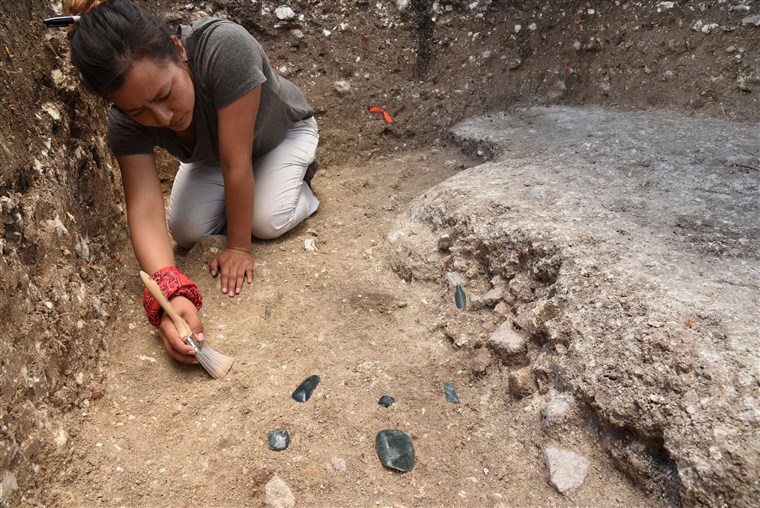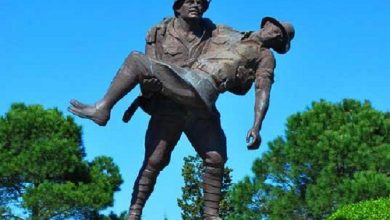Ancient wars: mysterious object found in Guatemala helped scientists unravel the causes

In one of the largest Mayan settlements, the city of Tikal (northern Guatemala), there are many hills. One of them was no different from the rest. However, when the researchers took an aerial photo of it and zoomed in, they saw something incredible. Beneath the vegetation and secular layers of soil, the shape of the human-made structure loomed clearly. It was nothing more than a pyramid.
Mini-copy of a cult place
Scientists believe that this ancient building was part of an area that included a substantially enclosed courtyard surrounded by small structures. The researchers were surprised that these structures are not at all like other buildings known in Tikal. These have a straightforward form. In terms of architecture, they are not characteristic of Tikal but Teotihuacan, an ancient superpower located not far from modern Mexico City. However, this place is more than 800 miles west of Tikal.
When experts examined the grandiose find in more detail, they were amazed to find that the complex that had opened to them was an exact copy of the vast square in Teotihuacan, known as the Citadel on which stands the six-level pyramid of the Feathered Serpent.
Brown University archaeologist Stephen Houston, who first noticed the similarities, admits that the overlap of details was overwhelming.
At the same time, scientists wonder: how did this mini-copy of Teotihuacan end up in the center of the Mayan capital?
What archaeologists have found

Researchers note that a large complex found in the heart of Tikal – one of the most extensively excavated and studied archaeological sites on Earth – demonstrates how successfully, with the help of the lidar laser complex, archeology is revolutionizing Central America.
With the help of the images taken by the lidar, the director of the archaeological project, Edwin Roman-Ramirez, began a series of excavations at the site. Breaking through the corridor in ruins, his team discovered construction and burial items, ceramics, and weapons.
All these findings were typical of Teotihuacan at the beginning of the fourth century. Archaeologists, for example, have found an incense burner decorated with the Teotihuacan Rain God, as well as darts made from green obsidian found in central Mexico. How so? Perhaps the complex found was an autonomous settlement of the Teotihuacan’s or something like their embassy in the center of Tikal, connected to the distant imperial capital?
“We knew that before 378, the Teotihuacan’s had some presence and influence in Tikal and the surrounding Mayan regions,” says Roman-Ramirez. It was unclear whether the Maya were just imitators, who in their way of life, took an example from the most powerful kingdom in the region, or something more connected to the two peoples. We now have evidence that the relationship between the inhabitants of Tikal and Teotihuacan was much closer than previously assumed.
Why did the relationship deteriorate?
Roman-Ramirez warns that the results obtained do not yet prove one hundred percent that the people who built the complex in Mayan land were from Teotihuacan. Isotopic analysis of bones found at the excavation site in the burial chamber may reveal this mystery. However, this probability is high.
After examining pottery artifacts found in ruins, researchers estimate that construction on this site began at least a hundred years before 378, a turning point in Mayan history. According to the records of the ancient Maya, the king of Teotihuacan sent a commander known as the Born of Fire to overthrow the king of Tikal – Jaguar Paw and appointed his young son as the new ruler. The Fireborn arrived in Tikal on January 16, 378. Locals, speaking about the date of Mayan death, say metaphorically: “It happened on the day when the Jaguar Paw entered the water.”
By the way, after the capture, Tikal flourished for several more centuries, conquering and pacifying the nearby city-states and spreading its culture and influence throughout the lowlands. And it is still unknown why Tikal, after ten years of peaceful and even friendly coexistence with Teotihuacan, suddenly turned from his ally into an enemy.
Scientists have found that rich houses in Tikal decorate with luxurious Mayan frescoes. These suggest that the ancient inhabitants may have belonged to noble families and were part of the elite. Shortly before the conquest of Tikal in 378, these frescoes were smashed into pieces and buried. And in a nearby pit, archaeologists found many human skeletons, which also broken.
“This means that at that historical moment, there was a sharp turn from diplomacy to cruelty,” the scientists state.
Just imagine: a handful of the Mayan elite lived for themselves, and suddenly all of them are killed, their palaces destroy, and all their belongings take out. And then their homeland was taken over by the child king.
“At what point and what went wrong?” – asks the archaeologist at Tulane University Francisco Estrada-Belli. And notes: “It is evident that we are approaching some significant turn of events in the history of the Maya and Teotihuacan. Perhaps we are a few steps away from solving the greatest mystery of Central America.




